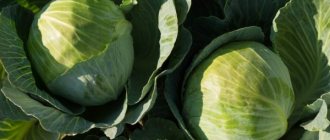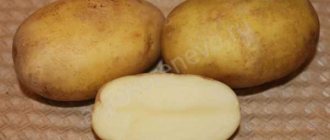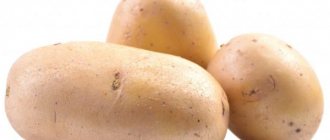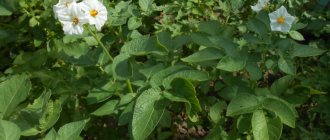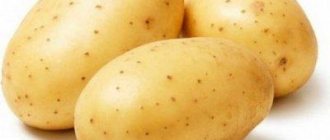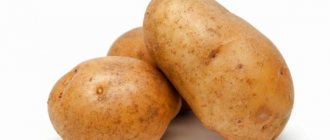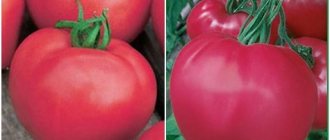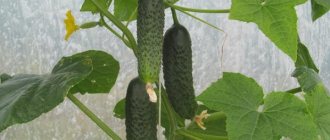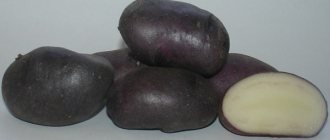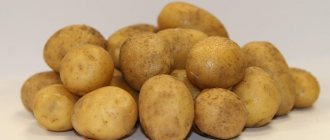Few people know that potatoes were once a wild plant that they tried unsuccessfully to domesticate for five thousand years. Today it is a traditional cultivated vegetable that grows in almost all gardens and summer cottages.
Agata potatoes captivate not only with their taste (for this reason, the variety is widely used for the production of chips), but also with its high yield. The culture does not belong to Russian developments, but quickly took root in our country and successfully adapted to its climatic characteristics.
What kind of potato is this?
Let us consider in detail the characteristics and features of this variety.
Origin and development
The Agata potato variety came to us from Holland . Dutch breeders instilled in it high yield and early ripeness. In Europe, the culture has become widespread not only among summer residents, but also among entrepreneurial farmers.
The crop has not yet been included in the Russian State Register of Breeding Achievements , but this does not detract from its popularity among summer residents and farms.
Historical reference. The homeland of potatoes is South America. For more than 10 thousand years, Indians tried to cultivate wild potatoes. A lot of effort and time was spent, but there was no result. The plant was tamed only after five thousand years. This happened in Peru: the Peruvians idolized the vegetable, making sacrifices to it. Today, up to 1,000 potato varieties can be seen in Peruvian markets. Moreover, local residents sell the vegetable not only in its raw form, but also pamper customers with unique ready-made dishes.
Description of the variety, appearance
The fruits are oval, slightly elongated, with small eyes .
The average weight is 80-130 g. The starch content is not higher than 14%, therefore, during heat treatment, potatoes retain their appearance. The peel is smooth, pale yellow, the flesh is quite dense, with a yellow tint. The taste is sweetish. The photo shows Agata potatoes.
The harvest is intended for long-term storage and can withstand long-term transportation . During long-term storage, the main thing is to ensure the fruits have optimal humidity and air temperature: the room should be cool and dry.
Ripe vegetables are suitable for preparing all dishes , potatoes are ideal for frying, mashing and baking. It also makes great chips and frozen mixed vegetables.
Reference! Many companies use this particular potato variety to make chips.
Characteristics of Alvar potatoes
Alvar potatoes are a long-loved species in the consumer market. Domestic farmers noted its taste and endurance.
Characteristics of Alvar potatoes
Description of culture
It was bred by German breeders from Frankfurt back in 1985. The Alvar potato variety was developed over 10 years of painstaking work by crossing two tubers through a long step-by-step selection - the modern type of fruit was developed. Every year more and more farmers choose this species for its excellent taste and ease of cultivation. The culture can grow on any type of soil. General characteristics:
Appearance
The description of the appearance of the culture can be characterized as follows:
- the bush reaches a height of 15 meters;
- the leaves are dark green, medium in size, smooth to the touch;
- blooms in several purple inflorescences;
- wide and branched shrub.
Description of the fruit
The description and characteristics of the tubers indicate that the Alvara potato variety is above all praise; its taste will not leave any owner indifferent. The tubers are all as chosen: even ones have the same rounded-oblong shape.
The peel is easy to clean, bright pink-red color. The pulp has a yellowish tint, weight is about 150g.
Advantages and disadvantages
Among the advantages are a high degree of productivity. Large harvests will not only provide you with food for the entire autumn-winter period, but will also allow you to make a good profit. Due to its unpretentiousness, the crop is able to take root and grow under any conditions and in any soil, which makes it indispensable in every region of the country.
Potatoes of the Alvara variety do not degenerate - this means that they can be used for planting year after year. Has a wide range of uses:
- cultivation on an industrial scale for export or import: due to good transportability, the loss during transportation can be only 3%;
- It is possible to produce chips due to their smooth and rounded shape;
- application in folk medicine and cosmetology;
- preparation of first and second courses.
The variety is resistant to cancer. Due to its strong immunity, it does not require heavy treatment with insecticides.
Among the disadvantages, one can note the rather high price of tubers. Another disadvantage is the low resistance to fungal infection or late blight.
Rules for germination of crops
Only healthy tubers can be planted
To grow the Alvara potato variety, we will need to germinate it. The better the sprouts, the better the harvest. To begin with, we need to decide on the material for germination. We carefully select each seed and inspect it for rot or roughness. We take the boxes and put the potatoes in them, put them in a dry, warm place where the temperature is 15 degrees. Within a month, heat and light will do their job, and you will get strong, healthy shoots.
In order to get sprouts faster, namely within 2 weeks, you need to:
- select the best tubers;
- place them in polyethylene;
- hang bags of potatoes in the light and make holes in the polyethylene.
This creates condensation in the bag and promotes rapid plant growth.
Landing in the ground
The soil is pre-flavored with humus or chicken droppings. Next, we plant according to the scheme and technology that is convenient for you. Many farmers are adherents of traditional planting schemes, which will require:
- Make a hole in the ground and place the sprouted tuber there, sprout up;
- sprinkle with soil and make beds on top, an elevation of soil;
- The scheme for planting potatoes on falvarak is 40×70, which will help the plant to develop correctly and not interfere with each other when growing.
Vegetable crop care consists mainly of watering and weeding the bush. Water procedures should be done 2 times a week. Weeding and gardening after rain or once a week.
Also, if necessary, you should treat the bush with insecticides against pests and apply fertilizers for better growth of your potatoes.
Diseases and pests
The most common vegetable disease is Late blight, which affects tubers and root systems. The fungus can develop in the soil and cause crop losses of up to 50%. The fight against Late Blight begins at the planting stage. The best prevention of fungal infection is to plant sprouted tubers. Also, in the fight against the disease, a solution of lime and copper is used.
Plant characteristics
This is a table variety, early ripening , fruit ripening occurs 80-85 days from the moment of sowing.
But the first excavation is carried out after 50-55 days. The bushes are low, spreading, and the foliage is medium . The leaves are small, dark green, the flowers are large, white. The root system is powerful and well developed, so the fruits grow quickly. There are practically no small potatoes.
The crop's disease resistance is above average ; the plant is immune to Alternaria, verticillium and potato blight, but is affected by late blight and fusarium.
Productivity
The variety is distinguished by high fruiting rates ; up to 400 centners are harvested from 1 hectare. One seedling produces 10-15 potatoes. The tubers retain their marketable appearance until spring and have a high shelf life. For stable and rich fruiting, plants must be planted in fertile, well-fertilized soil, although seedlings can grow in heavy clay soil.
Other potato varieties:
Adretta potatoes from German breeders
Mid-early potato Charodey from domestic breeders
Potatoes "Crimean Rose" for growing in hot climates
How to grow Agata potatoes
Another positive feature of Agatha is the possibility of early sowing . Seed material is sown into the soil as soon as it warms up to +10°C.
Dates, scheme and rules of planting
The tubers are prepared a month before sowing, carefully sorted, leaving only healthy specimens without visible damage.
Potatoes are placed in prepared boxes in two rows and exposed to light for germination. The room temperature during germination is maintained at +15°C. The planting material is ready for sowing as soon as the sprouts reach 1.5 cm and turn a soft pink color. The day before sowing, the tubers are treated with a growth simulator "Epin" for faster germination and "Fitosporin" to prevent fungal infections.
The soil is dug up two weeks before sowing with the addition of humus and wood ash . The holes are made in advance - 10 cm deep and at a distance of 30 cm from each other. Humus is placed at the bottom of each hole and water is poured. The row spacing is at least 70 cm. This planting scheme provides the necessary nutrition for the seedlings for full growth and development.
Planting material is placed in the prepared holes with the sprouts facing up. Sprinkle water on top and moisten the top layer of soil.
Reference! The weight of potatoes for sowing should not exceed 100 g.
Further care for Agata potatoes
Planting and care are not complicated and are reduced to normal procedures. The main thing is to plant potatoes in fertile soil and water them properly, especially on dry days . Proper watering means drip irrigation. This is the best option for supplying moisture, since with drip irrigation the water goes directly to the roots of the plants without exceeding the humidity level in the beds.
Reference! Excess moisture is dangerous for the development of fungal diseases.
After watering, the soil is loosened , thereby improving the air permeability of the soil.
The supply of oxygen is necessary for the development of the root system. Removing weeds also contributes to the full development of seedlings . Weeds take a lot of useful substances from the soil and serve as carriers of dangerous diseases. Weeds are also a favorable environment for the development of parasitic insects.
Hilling of seedlings is carried out three times before flowering . The soil is raked from the rows onto the plants. This procedure is necessary to grow new roots. In the last procedure, straw is laid out between the rows. This is called mulching, and it prevents the invasion of ground pests and prevents new weeds from growing.
With timely introduction of fertilizers, productivity increases . For this purpose, not only basic, but also foliar feeding is used.
Reference! For the full development of Agatha and a rich harvest, fertile soil and fertilizing are necessary.
A full complex of minerals is alternated with organic matter .
Two weeks after planting in the ground, the seedlings are fed with nitrogenous fertilizers to quickly increase green mass. During flowering, organic matter is added : bird droppings or mullein infusion in a ratio of 1:10. Also from organic compounds, an infusion of weeds is used along with wood ash.
During the fruiting period, they are fed with minerals , of which the most important are potassium and phosphorus. Also at this time, foliar feeding is carried out, for example, leaf treatment. To do this, 100 g of superphosphate is diluted in a bucket of water, this amount of solution is consumed per 10 square meters. m.
Important! Leaf feeding provides the potato with substances that, when they enter the tissues, are immediately absorbed.
Of the complex mineral fertilizers, the most commonly used are “Ispolin”, “Kemiru” and “Kristalon”.
Nuances and possible difficulties
When growing potatoes on your site, remember the rules of crop rotation and distribute planting sites according to expert recommendations.
The best predecessors of potatoes are cucumbers and onions, but the plant cannot be planted after pepper, eggplant and tomato, as it will not fully develop. These same crops are not recommended to be planted next to potatoes - they suffer from the same diseases and if any one crop is affected, the disease will immediately spread to all other plants.
When applying fertilizers, do not overuse complexes containing nitrogen . Oversaturation with such fertilizers contributes to the accumulation of nitrates harmful to health in fruits.
Diseases and pests
The plant is not immune to Fusarium leaf wilt and late blight . There are also pests that can damage tubers and above-ground parts of the plant.
Fusarium (dry rot) and late blight are fungal diseases .
They are dangerous due to the rapid spread of fungal spores and can destroy up to 70% of all plantings. To prevent fungal diseases, seedlings are sprayed with a manganese solution every two weeks. Potassium permanganate is diluted to a faint pink color to avoid burning the leaves. Also, for preventive purposes, the drugs “Ridomil” and “Oxychom” are used. These same remedies will help with plant diseases. The most dangerous pests are the mole cricket and the Colorado potato beetle .
The mole cricket moves underground, disturbing the root system. It cannot be noticed, so preventive measures are carried out immediately when planting seedlings. Fish heads or crushed garlic are dug into the rows, the smell of which the mole cricket smells long before approaching and avoids such beds.
The Colorado potato beetle is easy to spot. This is a large insect that damages the leaf blade, causing the plant to wither and die.
The pest is collected by hand and burned in glass jars. But do not forget that female beetles lay eggs on the inside of the leaf , which, like the larvae, cause irreparable damage to plants. Therefore, it is important when inspecting seedlings to turn over the leaves in order to detect orange clutches and pink larvae.
When there is a large concentration of the Colorado potato beetle, the drug “Prestige” or “Karate” is used.
Landing
The planting material represents elite tubers ranging in size from 4-5 cm (ideal weight 70-80 g). They should be free of stains, rot, erosion and growths. If seed potatoes weigh more than 90 g, they are not used - it is not advisable to cut the tubers.
For germination, root crops are taken out 1 month before the planned planting. They are sorted out and laid out in a thin layer in 2 rows in containers. The temperature is maintained at 12-15 degrees.
The sprouts appear pinkish, slightly pubescent. To protect against late blight, tubers are irrigated with 1% Fitosporin or Fundazol. To prevent damage to the Colorado potato beetle, Confidor is used.
In the temperate zone, planting begins from the 1st decade of May, in the south - from the 2nd-3rd decade of April. They focus on warming up the soil - at a depth of 10-12 cm the ground should be about 10 degrees.
For planting, the soil is cut into ridges or raised ridges. The holes are placed at a distance of 40 cm. They are dug to a depth of 10 cm in sandy loams and 5-6 cm deep in heavy dense loams. 100 ml of ash and 500-600 ml of compost are poured into the holes. A width of 60-70 cm is left between the rows. This provides good lighting and sufficient aeration.
Collection, storage and use of crops
The final harvest is harvested in August, but the first diggings begin in mid-July .
2-3 days before harvesting, the tops are cut off, leaving at least 10 cm. The fruits are dug up with a pitchfork or shovel and left to dry between the rows or put under a canopy if precipitation is forecast. After drying, the potatoes are ready for long-term storage in dry and cool rooms.
Agatha is grown not only in small summer cottages, but also on an industrial scale , in the fields. The shelf life of ripe fruits is high; 93% of the entire harvest retains its presentation. There are practically no small potatoes. All fruits are large and level.
Ripe vegetables are ideal not only for preparing first and second courses , but also for semi-finished products and chips.
Growing and care
The potato care regimen includes standard measures:
- watering several times during the growing season and flowering;
- preventive treatment against pests and late blight;
- weeding;
- surface treatment (loosening and hilling);
- removing vegetation after digging up crops.
Humidification algorithm:
| Deadlines | Peculiarities |
| When the stems grow to 10-15 cm | Norm for 1 plant 3-4 l |
| At the beginning of flowering | 1 bush requires 6-7 liters |
| End of flowering phase | Consumption per 1 vegetable 8-10 l |
| Tuber growth | The norm is 12 liters per 1 potato bush |
When the first seedlings appear, the surface of the soil is loosened and the emerging weeds are removed. How to properly perform hilling:
- first layer (3-4 cm) after germination;
- before budding, the height of the ground is 16-20 cm;
- at the end of flowering, the thickness of the mound is 2/3 of the height of the tops.
The hilling procedure helps to increase productivity (the roots receive better nutrition and oxygen).
To prevent the surface of the bed from drying out, mulch it with hay and rotted sawdust.
Features of fertilizing:
| Deadlines | Facilities |
| Before the first hilling | Urea solution, rate 0.5 l per 1 bush (diluted 20 g per 10 l) Solutions of mullein and droppings (diluted 1 to 15) Ash infusions and bioinfusions Complex products (Kristalon, Bulba, Giant) |
| 2 weeks after germination | A solution of urea 100 g, potassium monophosphate 150 g and boric acid 5 g (diluted in 10 liters), spray the bushes |
| 30 days before harvest | Superphosphate |
Advantages and disadvantages
In addition to high taste, the culture has a number of other advantages :
- possibility of breeding in all regions;
- unpretentiousness;
- high yield rates;
- versatility of use;
- long-term preservation of presentation;
- possibility of breeding on an industrial scale;
- attractive presentation and quick sale of finished products.
Negative qualities include weak resistance to fusarium and late blight.
For which regions is it best suited?
Below are the regions where Agata has taken root best and showed the highest yield (300 - 400 c/ha):
- Central;
- Volgo-Vyatsky;
- Ural;
- West Siberian.
Farmer reviews
This section presents the opinions of those who grew the variety on their plots. Reviews from summer residents are mostly positive .
Sergey, Kuban : “I’ve been planting Agata per hectare for 2 years now. I add humus to the fields in the fall. My harvest is rich. I harvest at the end of July and leave several rows for seeds. The taste of potatoes is unique, sweetish. There is little starch in the fruit, so you can cook any dish, the potatoes do not disintegrate. The puree is especially delicious: you’ll lick your fingers!”
Margarita, Moscow : “First of all, I would like to note the simple care of seedlings. In addition, my plants practically do not get sick, although I have been growing the crop for more than one year. I fight the Colorado potato beetle well in advance of its appearance. I spray the seedlings with insecticides and potassium permanganate. I also plant mustard and marigolds between the bushes. Potatoes are very tasty and suitable for any dish. Particularly good in baking and as a pie filling.”
